How Artists Use Natural Stone to Create Timeless Sculptures
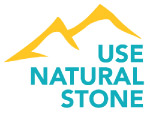 Megy Karydes
Megy Karydes
usenaturalstone.com
The beauty and versatility of natural stone are among the many reasons homeowners and builders gravitate to the material for their projects. Artists often are drawn to stone for similar reasons.
For artist and sculptor Sebastian Martorana, the challenge and beauty of the material was enough when he first began working with natural stone. “As I have grown, I now see natural stone as the best vehicle for the concepts that I want to explore,” Martorana admits. “Each stone, just like each sculpture, is unique. That cannot be said of anything that is cast or mass produced.”
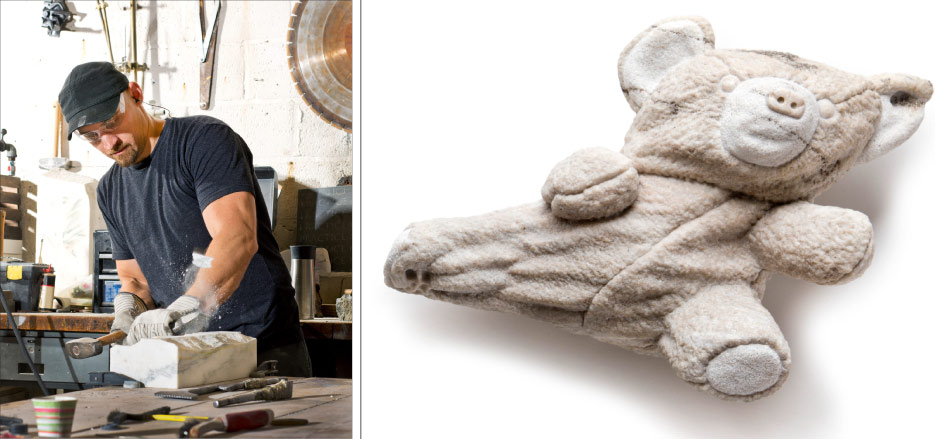 |
|
Sebastian Martorana, sculptor and illustrator lives and works in Baltimore, MD. Above, right: Permanent Separation Anxiety by Sebastian Martorana. Salvaged Beaver Dam marble. Photo by Geoff T. Graham. |
Sculptor Robin Antar agrees.
In her abstract work, her challenge is to make heavy stone look like it is twisting, bending, and light. “I like the fact that it’s heavy and I can transform it into a sculpture which has movement and form so people don’t realize the weight of it,” Antar shares. “I also work to bring out the beauty of the stone in each piece, carving it in a way that showcases its natural properties.”
Her Realism in Stone series also transcends the weight perception. “I sculpted a pair of jeans in limestone,” she shares. “Nobody realizes it weighs 80 pounds—it just looks like a pair of jeans.”
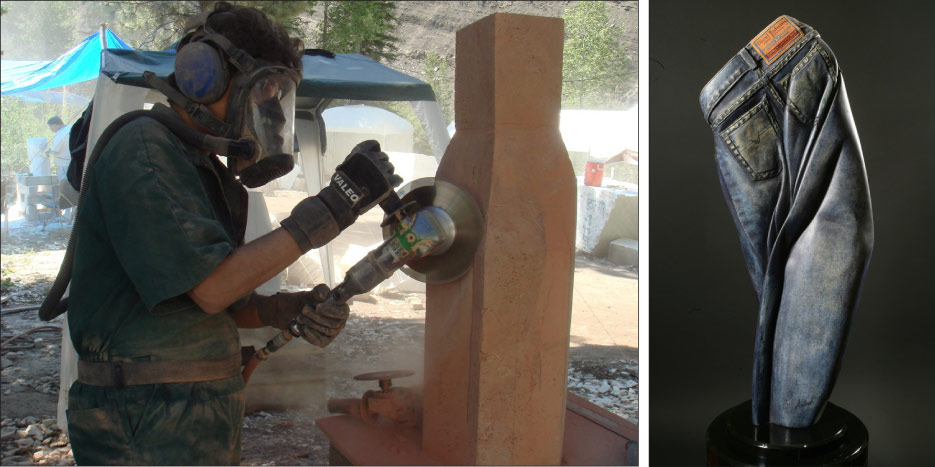 |
|
Robin Antar, American sculptor, at work. Photograph by Morris Gindi. Above, right: My Comfort Clothes by Robin Antar. Tinted Limestone. |
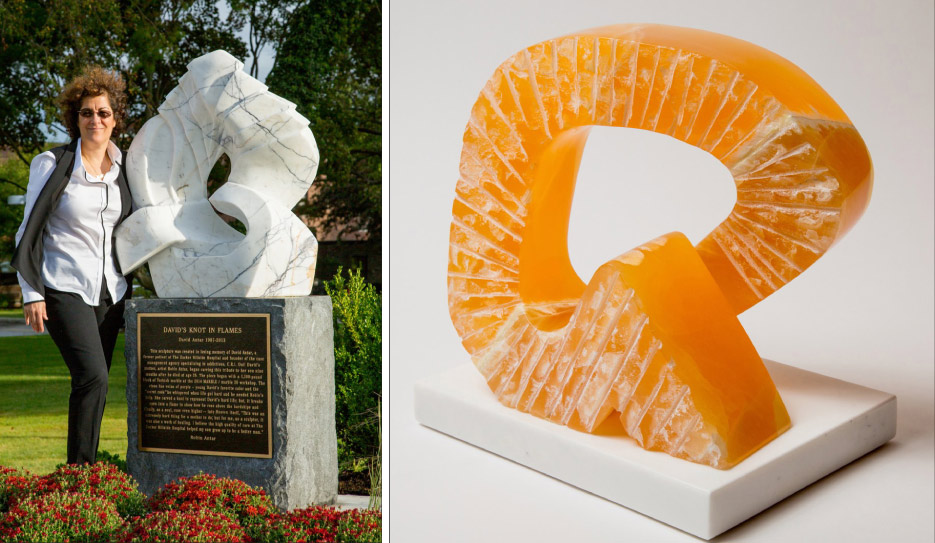 |
|
Above, left: Robin Antar with David’s Knot in Flames. Above, right: The Thinker by Robin Antar. Honeycomb Calcite. Photo by Morris Gindi. |
Natural Stone Tells A Story
Many of Martorana’s sculptures are made from salvaged material. In addition to the material’s geological origins and cultural association with memorial and permanence, each stone has its own specific history, which he appreciates and finds important.
“Where did it come from? What was it? When was it installed there? Why was it thrown away?” he asks. “Those answers inform each stone sculpture that I make.”
Even if the piece he uses wasn’t salvaged, where in the world it came from will be of significance to the completed work of art. It is rare for him to pick a stone at random for a sculpture as he always takes into account its individual story.
The Power of Natural Stone as a Form of Healing and Expression
As a sculptor, Antar is drawn to the subtraction process of carving and working with grinding tools. She also appreciates the challenge of taking an unworked, unpolished piece of stone that many might perceive as “dead” and make it come alive.
The type of stone Antar uses depends on the mood of the piece since she says different stones give off different moods. She offers honeycomb calcite to illustrate her point. “It looks like candy in a way,” she explains. “And when I carve out figure shapes, it has a very different mood than white marble, for example. A sculpture in honeycomb calcite – a light, airy, glass-like stone – would have a completely different feeling than an opaque white stone like marble.” Sometimes she’s drawn to a type of stone because of the emotion she’s trying to express in the piece.
“Different emotions, different stones,” Antar likes to say.
When she created a piece to honor her late son, which she titled “David’s Knot in Flames,” she chose a 1,500-pound block of Turkish white marble with purple veins in it, her son’s favorite color and the “secret code” he whispered when life got hard and he needed her help. “If I had done that same sculpture in a honeycomb calcite, it would have had a completely different feeling,” she says, adding that working on that piece literally saved her life. “Different textures can also create various emotions,” she adds. “The surface can be chiseled, polished, rough-cut.”
Jorge Vascano understands Antar and Martorana when it comes to the visceral feelings associated with using natural stone to create works of art. He’s currently an artist-in-residence at the North American Sculpture Center (NASC), an annex of Precision Stone Inc. which has been serving the architectural and design community over the last 35 years. The NASC offers artists, trained and untrained, classes in traditional stone carving techniques, clay modeling, digital modeling, and digital fabrication.
The stone Vascano chose to work with during a merit award sculpture residency in Carrara, Italy in 2017 was Bardiglio Nuvolato, a beautiful white and grayish stone full of veins.
“While I was sculpting, and revealing the forms of the sculpture, the natural attributes of the stone, such as the hardness, the way it would break, the inner colors, the smell, the sound when striking, the time it took and the physical demand [all] contributed to gradually see the sculpture differently,” he admits. “The nature of the stone was stimulating past experiences in my life, taking me to places in my mind I had not visited or considered in a long time.”
He began to see these visions in the stone slowly, as if the stone and the process were inviting him to go in a certain direction. He recalls the experience as beautiful because in those long hours of observation and understanding the stone, the material was allowing him to have a conversation with himself. “I felt the stone and its uniqueness were the vessel, the vehicle,” he adds. “At the end, the piece ended up having a way more intense feel that I initially anticipated.”
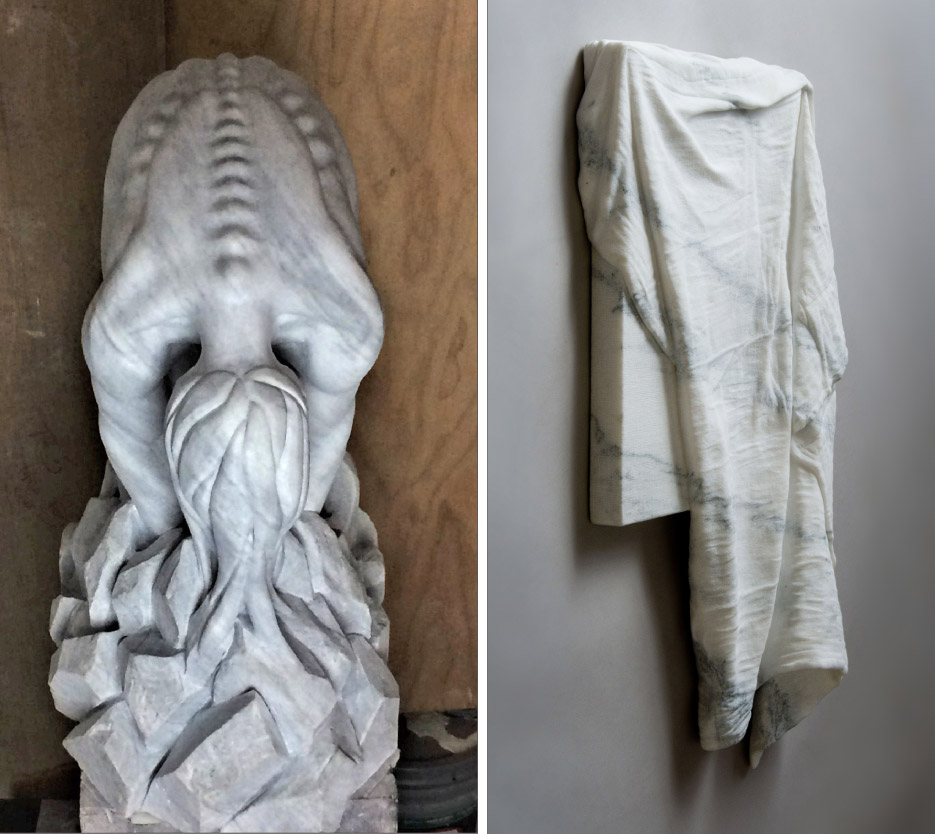 |
|
Above, left: Escombros by Jorge Vascano. Above, right: Unseen by Sebastian Martorana. Montclair Danby marble. Photo by Geoff T. Graham |
What It Means to Sculpt Using Natural Stone
Martorana likes to remind people that natural stone is a natural material, so the irregularity that comes with that should be expected and enjoyed. “If you want something that is going to be aesthetically consistent, you can find that in a cast mate rial,” he says. “Natural stone can provide patterns within patterns that have been millions of years in the making. If you don’t appreciate that quality, then natural stone is not for you.”
Vascano feels artists are drawn to natural stone because it has a natural poetry. Unlike other types of material that can be used to create sculptures or art, he says using natural stone is completely different. For one, it’s hard and requires patience.
“You have to learn the feel of each stone to work with because each of them is different,” Vascano
adds, noting that is also requires an understanding of how the material needs to be handled, while its composition and its physics also need to come into play in order to take advantage of the possibilities each stone has to offer as well as their limitations.
For more information on the artists in this story, visit usenaturalstone.org .